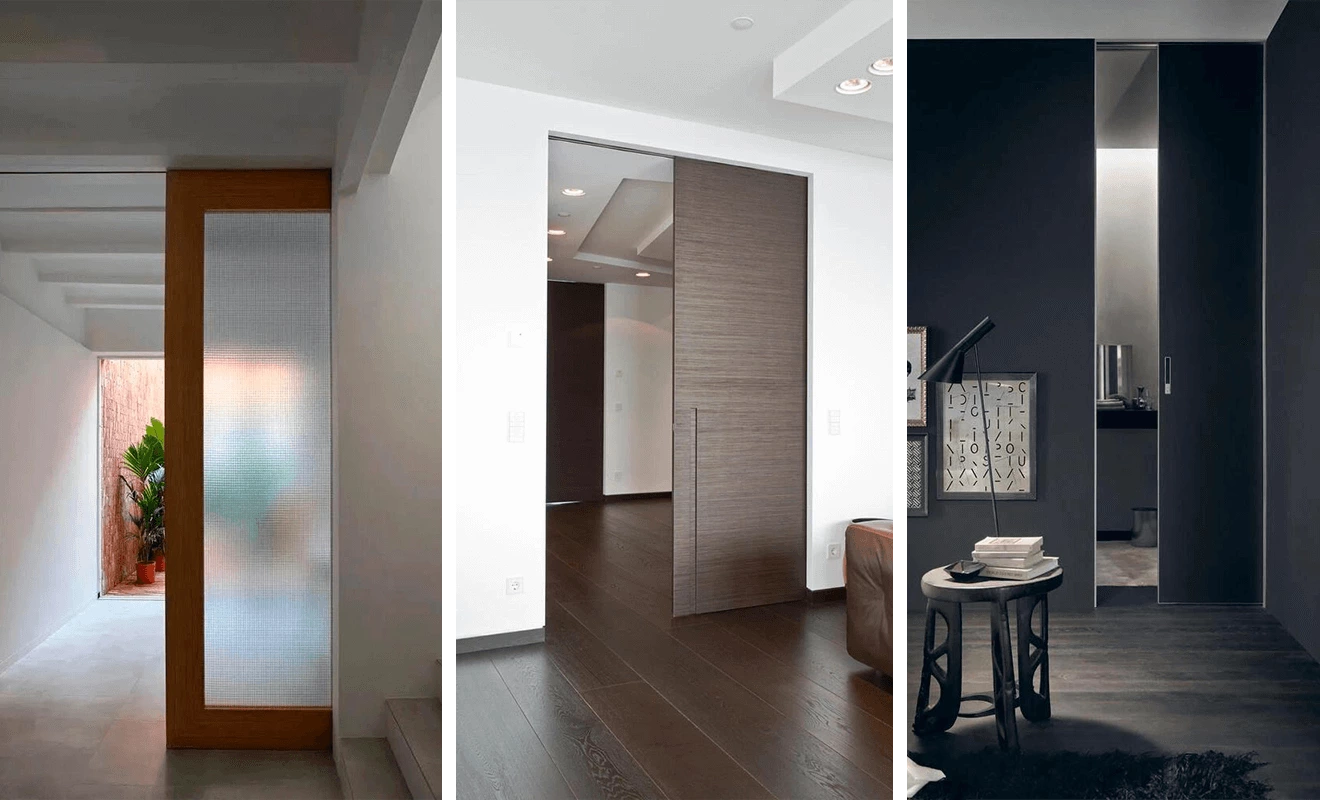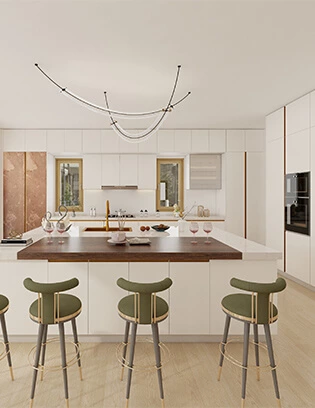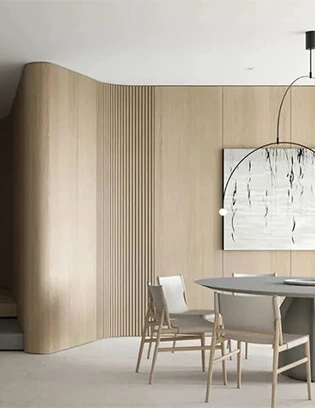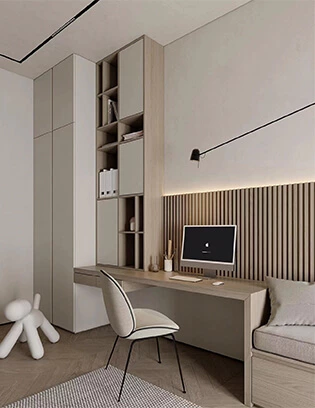Interior Pocket Door: A Switch for Home Space Flexibility
Pocket doors were once a hallmark of Victorian architecture in the mid-to-late 19th century. However, by the mid-1920s, they began to fall out of favor as hinged doors quickly became the norm. Recently, though, the demand for space-saving solutions and forward-thinking design has brought pocket doors back into the spotlight. Once overlooked, this design has become increasingly common in modern interiors, with its creative potential and functionality now being fully appreciated. These flexible sliding doors effectively divide spaces or, conversely, allow for seamless transitions between them. They save space and contribute to a unique and stylish interior ambiance.
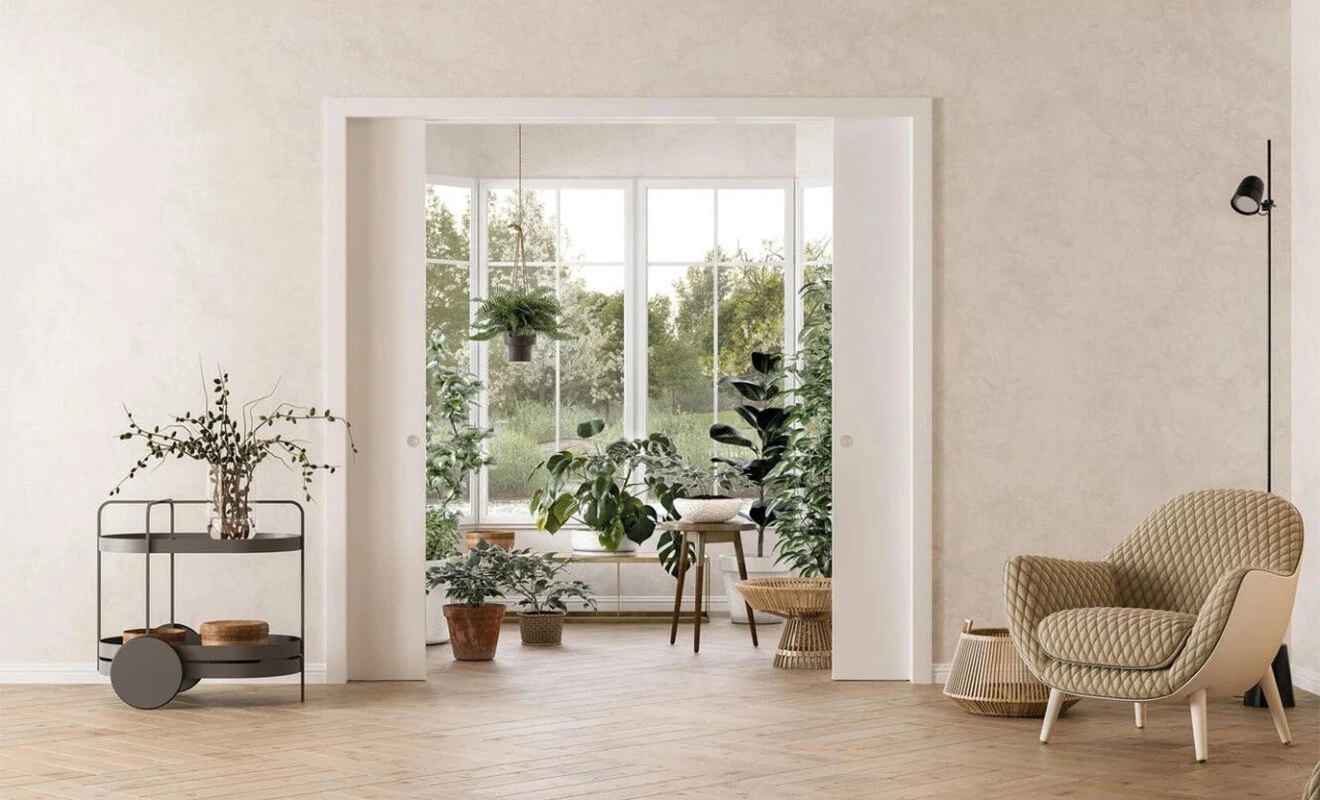
Essentially, pocket doors function like sliding doors, but with a reserved space within the wall where the door can retreat when opened. This design saves the required space for the swing radius of hinged door, freeing up additional space for furniture or movement, and creating the visual impression of a larger room.
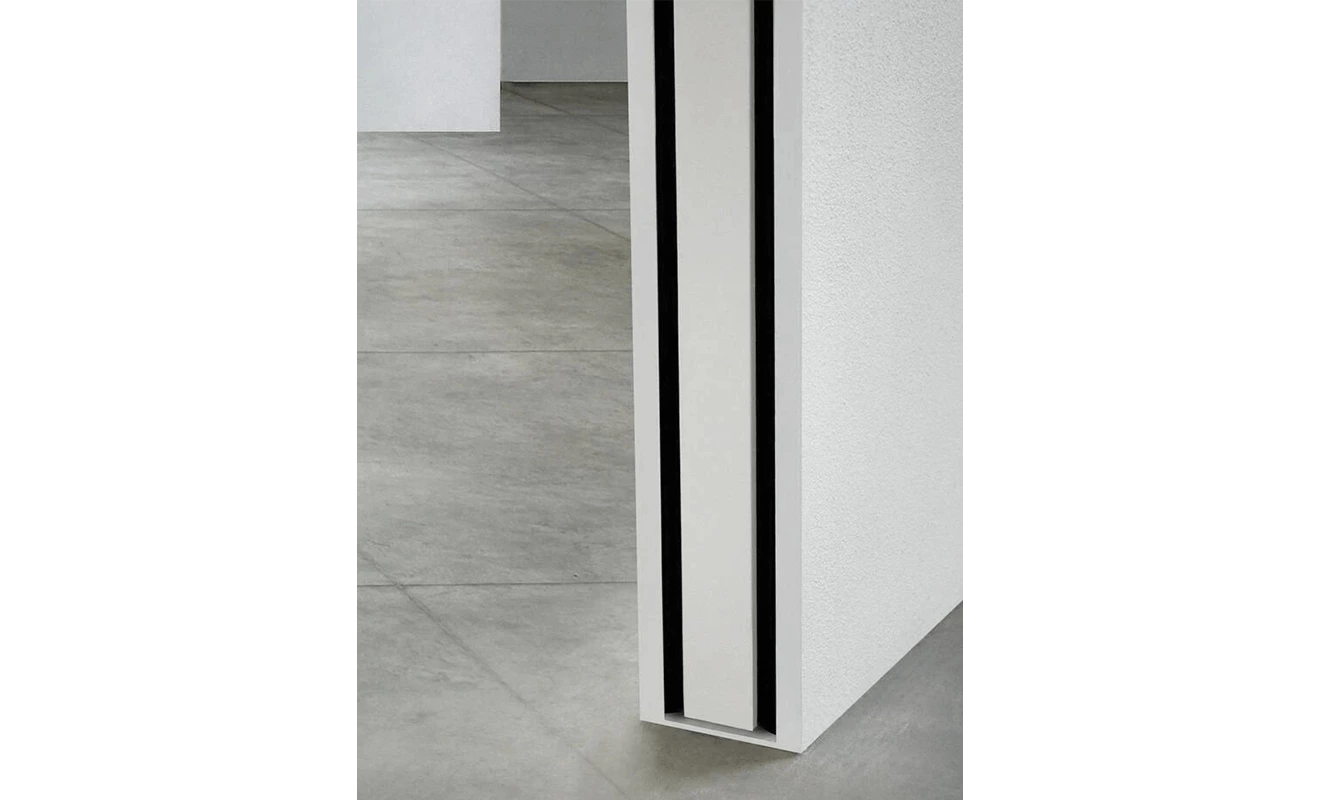
Pocket doors are widely recognized by architects, designers, and homeowners for their unique space-saving capabilities. As our living environments shrink and spaces grow tighter and more precious, these doors are gaining increasing popularity. Keep reading to explore their functional applications in contemporary home interiors and the creative design opportunities they offer.
Space Maximization
Compared to traditional doors, a pocket door can save approximately 0.9 square meters of floor space. Additionally, it optimizes wall space, maintaining a clean and uncluttered visual aesthetic. In small spaces where every centimeter matters—such as kitchens, closets, bathrooms, and bedrooms—pocket doors are an ideal choice. They also work well in larger rooms.
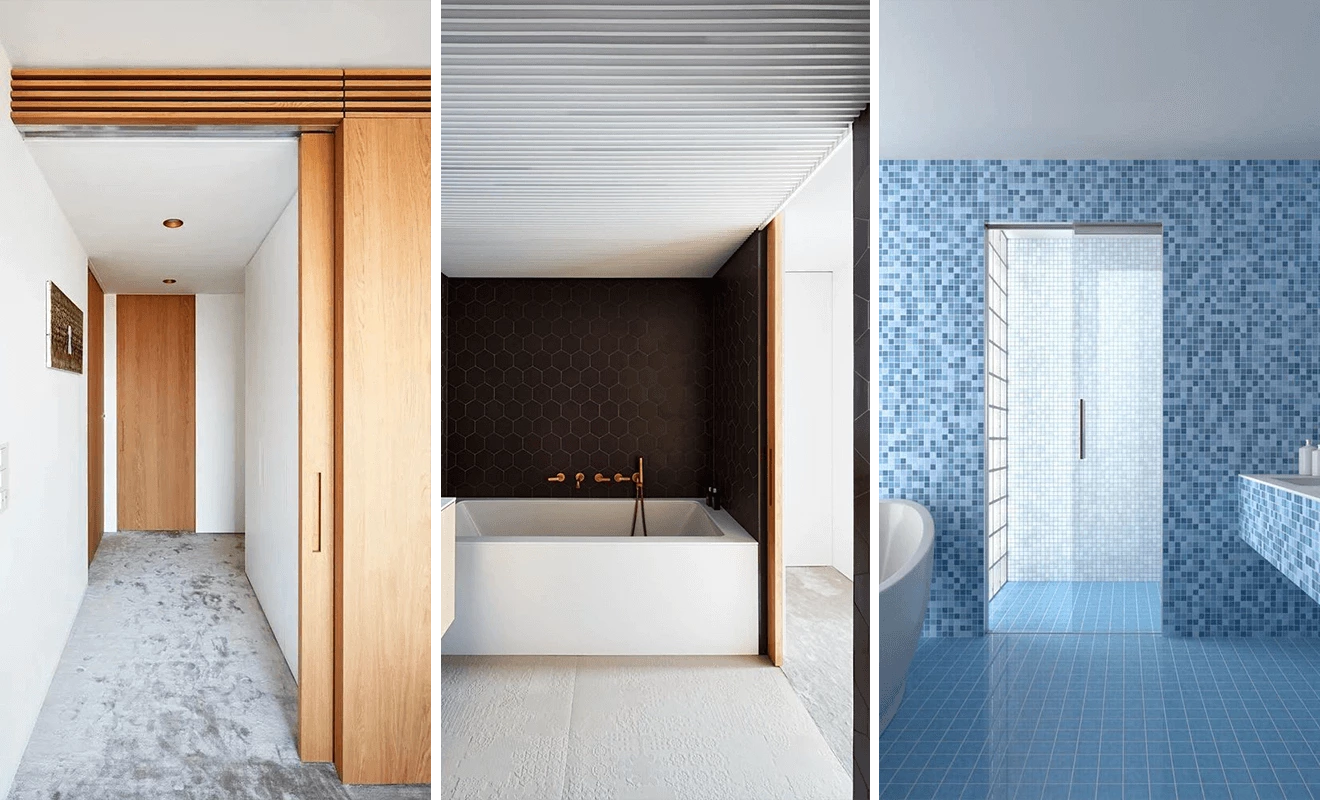
Smooth Connectivity and Space Division
In a world that demands fluidity between living and working, pocket doors offer the perfect balance. With a simple slide, pocket doors easily separate or connect adjacent spaces. Their hidden design allows for smooth transitions between rooms, for example, to connect a living room to a dining area or a bedroom to a study when a double pocket door is opened. They also provide complete closure and privacy when a space is not in use.
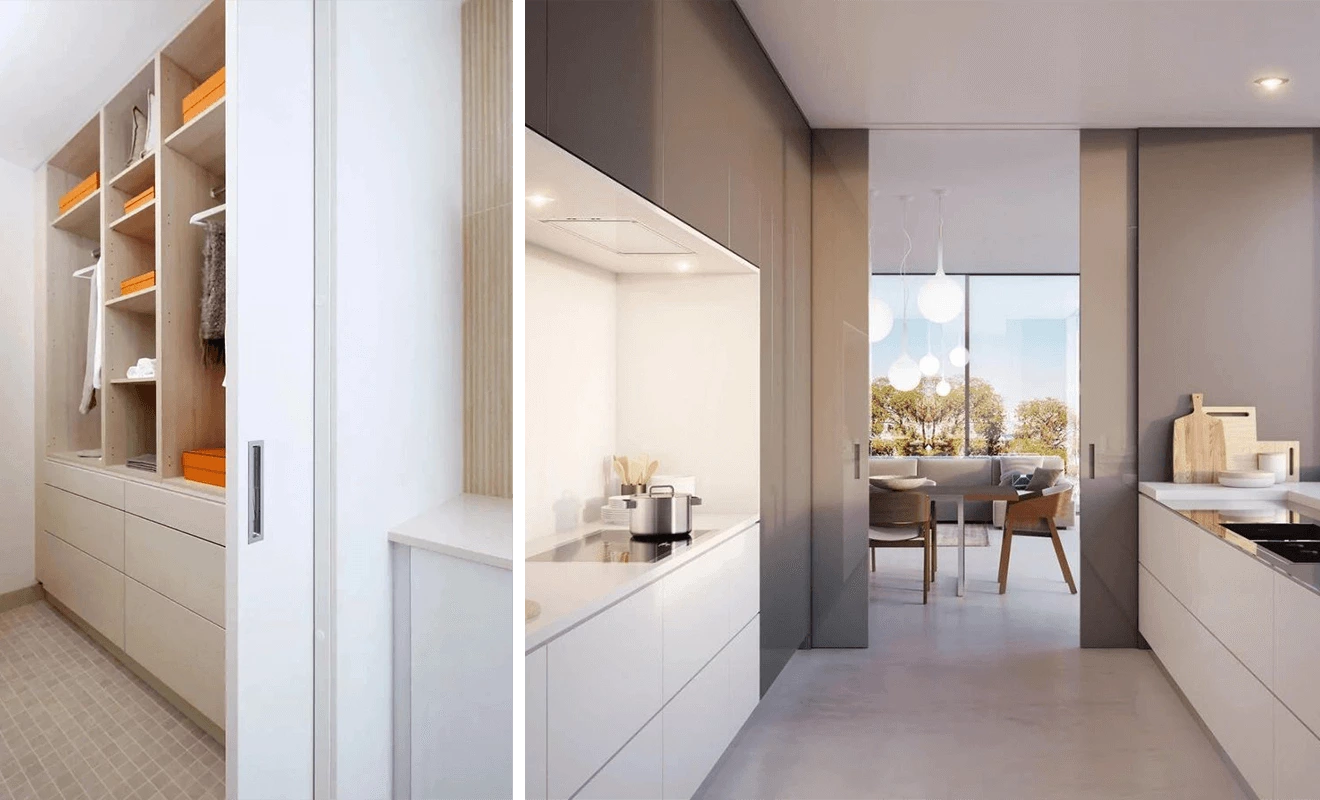
Design Aesthetics
Pocket doors also stand out for their endless creative potential. They come in a variety of designs, styles, and materials, such as wood, glass, metal, or a combination of these, and can be paired with various hardware options, including handles or knobs. This allows designers to create striking contrasts with surrounding walls or achieve a cohesive, clean, and minimalist aesthetic with seamless integration. Moreover, pocket doors can be customized in different forms and installation methods to create distinct effects. They can be oversized, flat, or curved, with single doors for smaller spaces and double doors for larger ones.
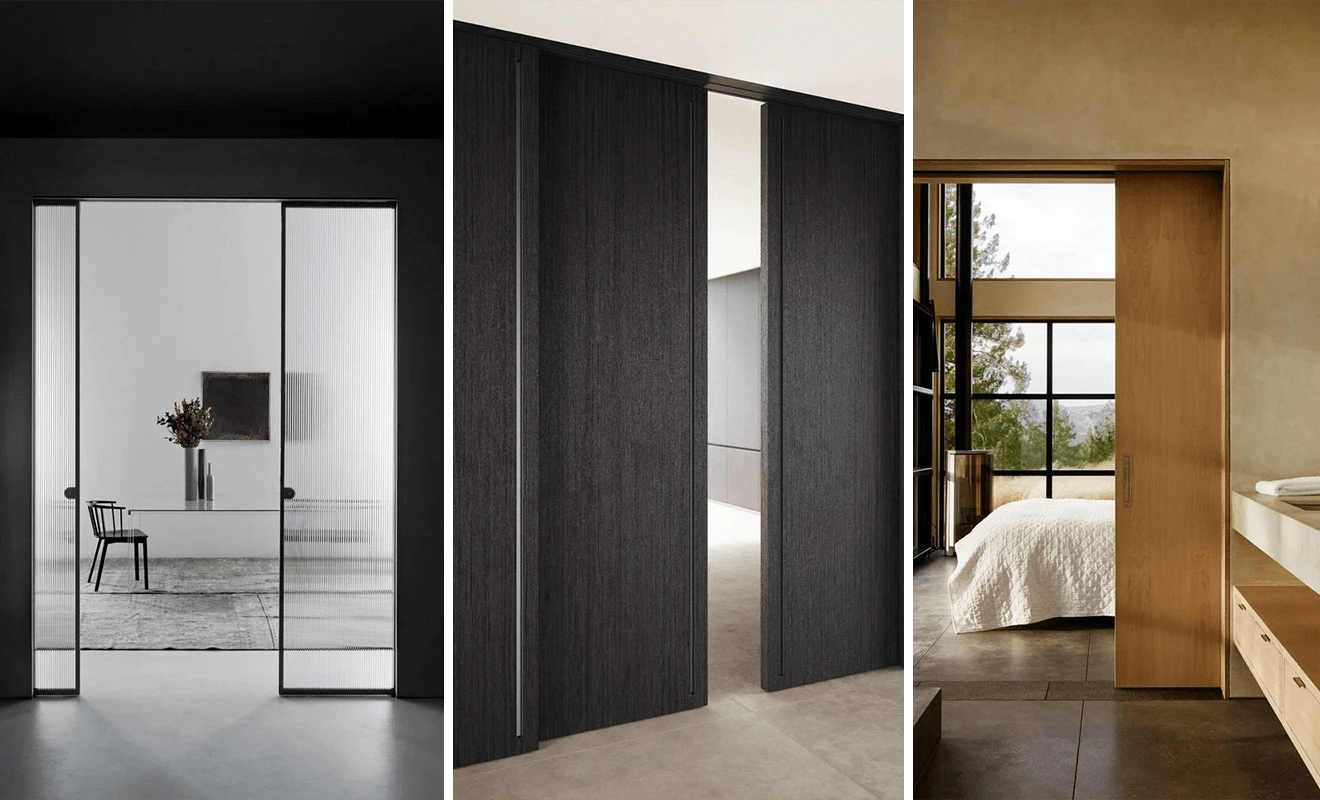
Forward-Thinking and Superior Accessibility
When it comes to improving the flow and accessibility within a home, pocket doors are an excellent choice. They are particularly beneficial for moving large furniture, for wheelchair users, or for others with mobility challenges, as they eliminate the need to reach for a handle to swing the door open. Instead, the door simply slides open to the sides, allowing for easy and unobstructed passage. Of course, the design and user’s specific needs play a significant role, but several key factors should be considered: the door should be wide enough to allow for sufficient clearance, the handle area should be easily accessible to all users, and whether manual or automated, high-quality components or suppliers should be chosen to ensure smooth operation, durability, and ease of maintenance.
